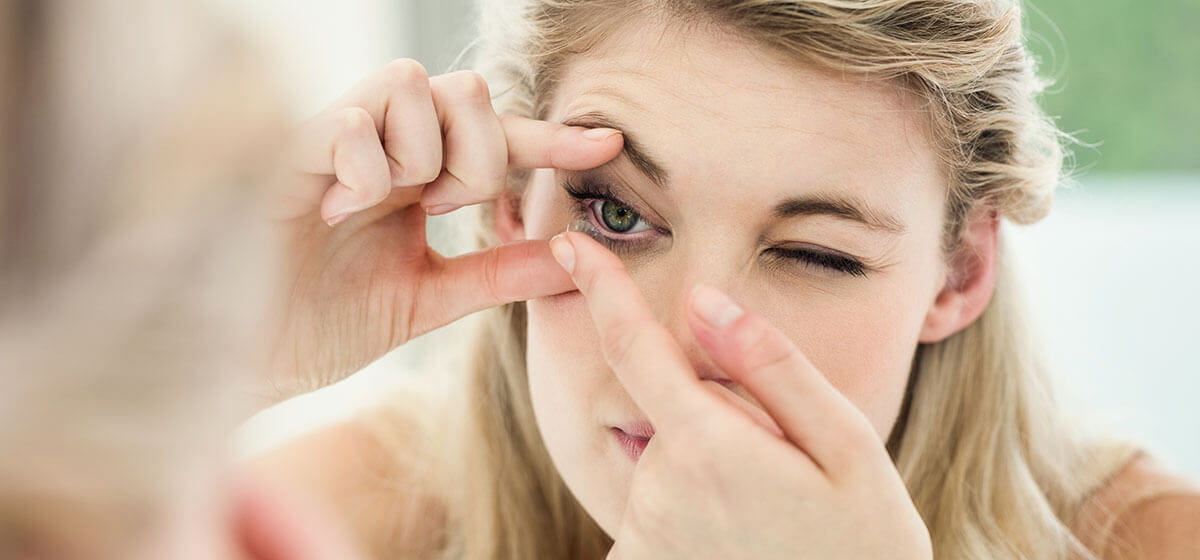6 Ways to Wear Contacts Safely

Remember that cringe-inducing news story about the woman who had 27 contact lenses stuck in one eye?
That would be an example of how not to use contacts.
About 40 million Americans wear contacts. They offer convenience and clear sight, and unlike glasses, they’re virtually invisible.
Another difference from glasses? Contacts go directly on the eye, of course, which means they bring some risk of infection and injury to the cornea, such as abrasions or ulcers. In extreme cases, these problems can cause blindness.
There’s no need to ban contacts from your eyeballs. Just follow these safety tips to keep your sight clear:
1. Wash your hands with soap and water before touching your contacts. This one’s pretty intuitive: You don’t want the germs on your hands in your eyes. Make sure to dry your hands with a clean towel before touching your eyes or contacts; even clean tap water can be a hazard for your eyes (see No. 4).
2. Clean your lenses thoroughly and according to instructions. Unless you have daily-use contacts, which you toss at the end of every day, you’ll need to clean and store your contacts. Doing so properly is critical to avoiding infection. Several cleaning methods exist; talk to your eye doctor about the best one for your type of contacts and follow all directions on the solution bottle. (If the bottle has a red tip, the solution includes hydrogen peroxide and should not go in your eye.) Experts believe including a “rub and rinse” step (rub the contacts in the cleaning solution, then rinse them in the cleaning solution) is especially effective.
3. Replace your contacts, case and solution often. Don’t try to save money by reusing solution or wearing your contacts longer than recommended. If your doctor says to wear your contacts for no longer than two weeks, listen. Those old contacts may harbor bacteria, allergens and other deposits, and they’re not likely to be as comfortable. Replace your case at least every three months; the microscopic germs that live in them, even after you try to wash them, can cause serious eye infections. And never reuse solution, whether it’s saline or your cleaning formula.
4. Keep your contacts away from water. That means don’t shower or swim in your lenses. The risk is of Acanthamoeba keratitis, an eye infection that can cause blindness. The amoeba that causes the infection is found in water, including tap water, pools, hot tubs, lakes and oceans. The organism has to make contact with the eye to cause the infection; it doesn’t hurt you to drink or inhale the water.
5. Don’t sleep in them. Yes, some contacts are now marketed for overnight wear. But in general, sleeping in your contacts increases your risk of bacterial keratitis, an infection that causes eye pain, redness, blurred vision and discharge.
6. See your eye doctor as recommended. It’ll probably be once a year. First, it’s important to get your eyes checked to make sure that your prescription hasn’t changed and that you’re seeing as clearly as possible. But more important, contact lens wearers need to confirm that their eyes are healthy and that the contacts aren’t causing long-term problems such as corneal neovascularization, when new blood vessels grow into the cornea, potentially threatening sight.
Got something in your eye or suspect the redness you see is pink eye? Go to the Baptist Health Urgent Care nearest you.



